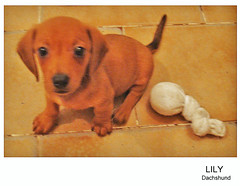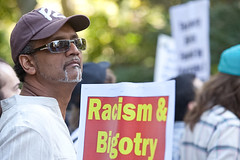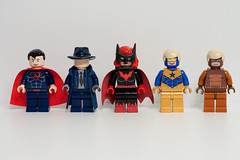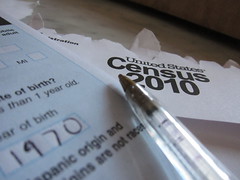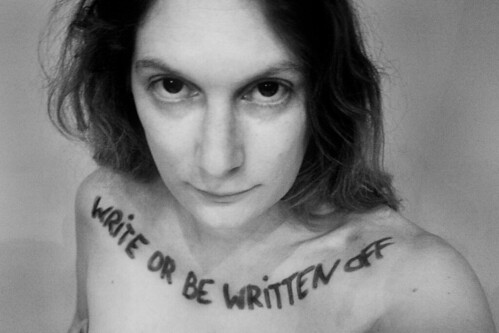
At Contexts and TheSocietyPages.org, we spend a lot of time thinking and expounding about how, for social science to be effective outside the academy, it simply has to be accessible. That means writing rigorous science in an approachable way and allowing for skillful editing to help make our points clear and concise for all readers. Doug Hartmann and Chris Uggen have been addressing these issues recently, both in their Letter from the Editors column in each quarterly issue of Contexts and in their Editors’ Desk posts here on TheSocietyPages.org. They’ve written about science-in-the-vernacular and the art of being edited, along with the nuances of presenting scientific knowledge when, well, “It’s Complicated.” What we haven’t talked about is how good writers become good writers.
Sure, a few excellent authors were born that way. Silver-tongued and fleet-fingered, these stars of social science naturally present the insights of the ivory tower in the language of the people. Show-offs.
But, as a recent essay submitted by one sociology student points out, the rest of us need a little help. Kate Parker says, “For many undergraduate students, the writing life of a professor is pure mystery,” and pleads, “Teach students about the process of writing… Better yet, tell them about your writing process.” Below, her essay in its entirety and, in the comments (with any luck) you can share your suggestions on making writing itself a key pedagogical function.
“Out of My Shell,” Kate Parker
I used to be notorious for refusing to let anyone but professors read papers I had written. My mother? Nope. My partner? Not likely. My fellow sociology students? No way. Each time I turned a paper in, I was convinced it was awful. My writing process involved a steady flow of anxiety, punctuated with moments of pure panic. I paced around the room, consumed sweets as though they were pure intellectual fuel, and stayed up all hours of the night. In the end, I was sure that I had missed something critical. I was certain that my thought process was not sophisticated enough or that my writing style was average at best. So when a professor suggested I take her class on writing for sociology students, I nervously jumped at the chance.
On the first day of class, I took a look at the requirements for the course and came across one of my biggest fears: peer reviews. Not only did I cringe at the thought of my fellow students quietly laughing at my writing, I felt extremely uncomfortable with the idea of criticizing their work. Who was I to judge someone else’s writing? We started reading Howard Becker’s book Writing for Social Scientists and discussed our fears in class. Our professor explained that graduate students and professional sociologists depend on their peers for feedback.
After realizing that everyone else was as nervous as I was, my fears started to lessen. We reviewed each other’s work several times throughout the semester and I began to (brace yourself) enjoy them. Reading my classmates’ work exposed me to new styles of writing. Finding both effective and ineffective aspects of their work helped me focus on what was effective and ineffective in my own. They gave me fantastic suggestions and helped me work through specific areas I was struggling in. I even found myself continuing to discuss assignments with other students after class. Most importantly, I realized that letting others read and comment on my writing made me a better writer and this skill will be extremely useful when I graduate.
Peer reviews were not my only fear, however. We were also expected to write multiple drafts of each assignment. Like many undergraduate students, my idea of paper writing consisted of sitting down at 10pm the night before an assignment was due and writing the entire piece at once. No drafts, minimal revisions. I thought writing and revising multiple drafts were irritatingly tedious. Now, in hindsight, it’s very easy to see why I was so anxious about my papers. I felt that I had to have it perfect the first time. And by waiting until 10pm the night before, I sort of did. As I wrote and rewrote drafts for my writing class, I enjoyed how it managed to quell a great deal of the anxiety I felt during the writing process. I stopped pacing around my room and eating a steady stream of sweets all night. Realizing I didn’t have to create perfection the first time around was a huge relief, and I have taken that knowledge to other parts of my life. I used to avoid risk in any situation, fearing humiliation if I didn’t do something correctly. Now, I am comfortable with the fact that nothing is perfect the first time and sometimes I need to just go for it. This has led me to start running again with the goal of finishing a half-marathon within a year, regardless of the fact that some people may think the term “running” is a bit of an exaggeration due to my tortoise-like pace.
Finally, I had to deal with my worst nightmare. Even the mention of public speaking was enough to send my heart racing and make my palms sweaty, and now I had to endure this horrible process twice. The first would be a practice presentation of our final research paper in front of the class. The second was far worse: presenting at an undergraduate research conference. I had grudgingly participated in the conference last year, and it was not an enjoyable experience due to the feeling of my nerves being wrapped around my stomach. A class I had taken in public speaking ended in disaster after disaster. Why would this be any different? Luckily, I felt very comfortable with my classmates by this point in the semester, so I did not feel overly anxious during the practice session. The conference presentation loomed in the back of my mind, but I began to notice that I wasn’t feeling the deep, overwhelming sense of dread I had previously experienced. This, however, made me nervous. There was no logical reason for me to feel this calm. Surely a massive panic attack was just lurking under the surface, waiting until I made my way in front of a room filled with people. But then this fear of my lack of fear suddenly disappeared as I made my way to the podium. I presented my research loudly and clearly, without my face turning the unnatural shade of burgundy that had accompanied all of my previous public speaking experiences. The confidence that had been built in my class transferred to my presentation, and if I had not been forced into the experience I would still be terrified of talking in front of people. As a committee member for a local charity event, this confidence in front of a crowd was a great asset when I had to address volunteers, and I’m extremely grateful that I have this skill for my future career.
I’d like to finish with a little advice for Sociology professors: please teach your students how to write. I’m not just talking about how to write a great topic sentence or how to use correct punctuation. Teach students about the process of writing, that it’s ok to ask for help, that you don’t have to get it perfect the first time. Better yet, tell them about your writing process and the anxieties you have experienced. For many undergraduate students, the writing life of a professor is pure mystery. It seems intimidating, foreign, out of reach. Your students may have made it halfway through college, but it is very likely that no one has truly challenged them to face their biggest fears associated with writing. If you give them this challenge, they will be much more confident and prepared for graduate school and professional life.
Kate Parker graduated from Indiana University of South Bend in 2010. She wrote this essay for Dr. Gail McGuire’s course “The Social Practice of Writing.” Parker can be reached at kate[dot]parker4[at]gmail[dot]com.



